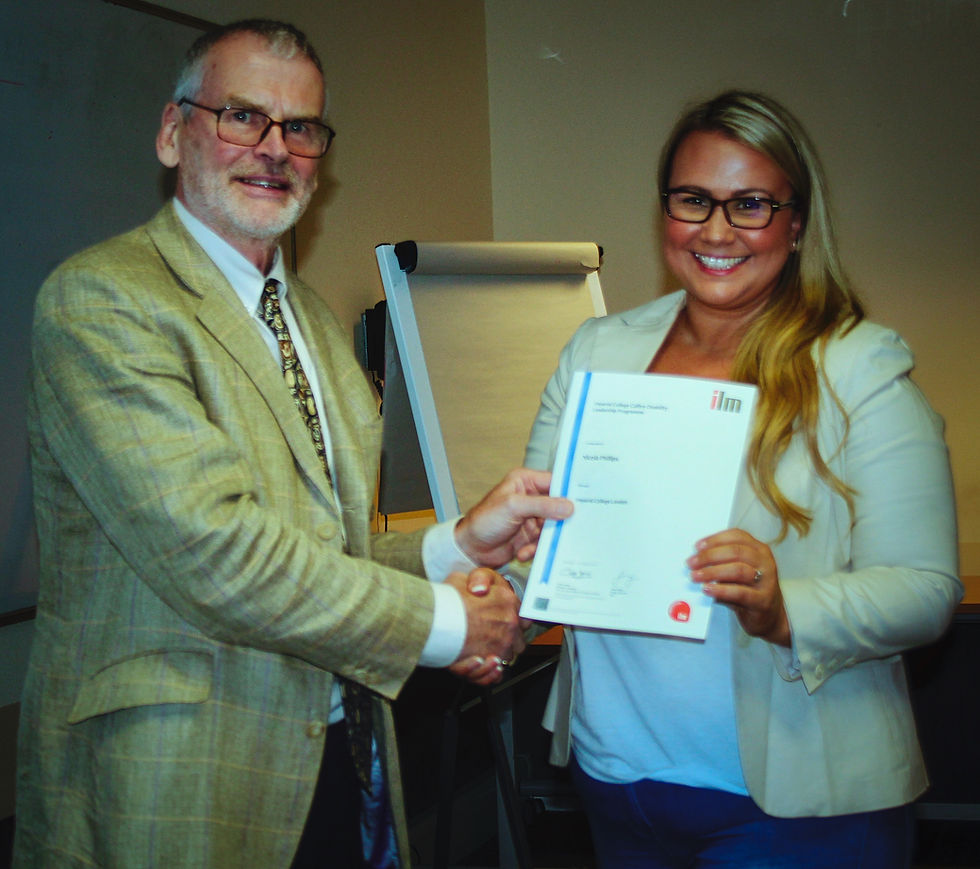The biggest secret in Disability: Reasonable Adjustments for disabled staff
- OWS

- Mar 3, 2020
- 4 min read

One of the most effective ways a manager can support a disabled member of staff is to offer them a reasonable adjustment. Designed well, with the close involvement of the member of staff, it can make the difference between success and failure for that employee. Unfortunately, few managers know what it is, let alone how to take advantage of it. They are not alone. Disabled staff, too, know very little about them or how they work. Few know they have the right to request them to solve the disability related problems they face at work.
The result is that reasonable adjustments remain disability’s biggest secret despite being a legal requirement even before the Equality Act became law in 2010.
The aim of this week’s blog is not to rehearse the reasonable adjustment guidance. You can find plenty of websites which do just that. Instead, this blog will seek to identify the reasons why disabled staff and managers, alike, are generally ignorant of the transformative power that reasonable adjustments offers.
So, what is a reasonable adjustment again?
Okay, briefly; all employers have a legal duty to take steps to remove, reduce or prevent the obstacles faced by disabled worker or job applicant, where it's reasonable to do so. This has been the law since as early as 1994, and a key provision of the Equality Act 2010. Find out more about reasonable adjustments here.
Okay, why is this ignorance so serious?
That is a good question. To put it simply, poorly implemented or the refusal to provide a reasonable adjustment is not only illegal, but also extremely damaging for the career prospects of disabled staff. It can even lead to litigation for wrongful dismissal.
This duty to offer reasonable adjustments has been around for so long, first as part of the 1994, Disability Discrimination Act and most recently the 2010 Equality Act. So, it is disturbing that so few people have heard of it, let alone how to legally apply it. So widespread is this ignorance that examples of poor implementation of this provision are reported to us at every single Calibre programme we have hosted.
Often, we hear of the experience disabled member of staff who cite examples of a poorly implemented reasonable adjustment. Such as when Occupational Health recommended adjustments have been rejected by their manager “at their discretion”. Or because the manager fears that it would create resentment among the rest of the team if implemented. The common refrain being, "I can't allow this because everyone else will want it as well”.
These are numerous other examples I could describe. Behind each one you will find a very frustrated member of staff, a career blighted or even are university or an NHS trust locked in damaging litigation. You will also find an organisation that has not prepared its managers to implement this aspect of the law correctly.
This brings us to what organisations can do to help managers implement reasonable adjustments properly.
Training

It is a common assumption that the disabled person is the problem when it comes to disability in the workplace. Rarely are they seen as just employees who happen to work differently and need their working environment adjusted meet their needs. A focus on workplace adjustments would allow an employer to understand that the problem is the workplace and not the employee.
At the moment most of the advice on reasonable adjustments is often an afterthought in equality training. Specific training on reasonable adjustments is usually biased towards the avoidance of litigation and is not very practical. Often there is little attempt to distinguish between the disabled person and the barriers they face. So, spending half a day talking about reasonable adjustments without follow up to ensure managers know how to apply the law practically, would be a waste of time.
Avoid the ‘one size fits all’ approach
It is a mistake to assume that one wheelchair user, as an example, faces the same barriers as another wheelchair user. Yet it is one often made despite the opposite being closer to the truth. Barriers faced by one individual are often unique to them. In many ways, this is what makes reason adjustments appear quite complicated. This is because you cannot make any assumptions about the requirements a disabled person requires.
Rare is this explained during any training. So, it should not come as a surprise that managers might immediately assume a disabled person is being difficult when they reject a reasonable adjustment solution that worked in the past. This makes it vital for managers to learn that every disabled employee is a unique individual with their own ways of working. This would help managers accept that the disabled person is the on most knowledgeable about the barriers they face and should seek their advice how they would prefer them removed. This approach can only be successful if disabled staff themselves understand that this is their role, too.
Education will empower disabled staff
The primary purpose of the Calibre programme has always been to educate disabled staff. They learn about the law, that barriers are the real problem in the workplace, and how they can assist their manager to remove them. This is often a transformative experience for many of the Calibre participants. The programme serves to increases confidence and knowledge. For the very first time, participants understand how they can work with their managers to remove the barriers they face. Rather than an adversarial relationship, the manager and a disabled member of staff should be allies on this shared undertaking. Not only will it improve their relationship, it will boost confidence and self-esteem and increase productivity, as well. This is a win-win relationship.
If you'd like to know a bit more about the Calibre programme feel free to get in touch.





Comments